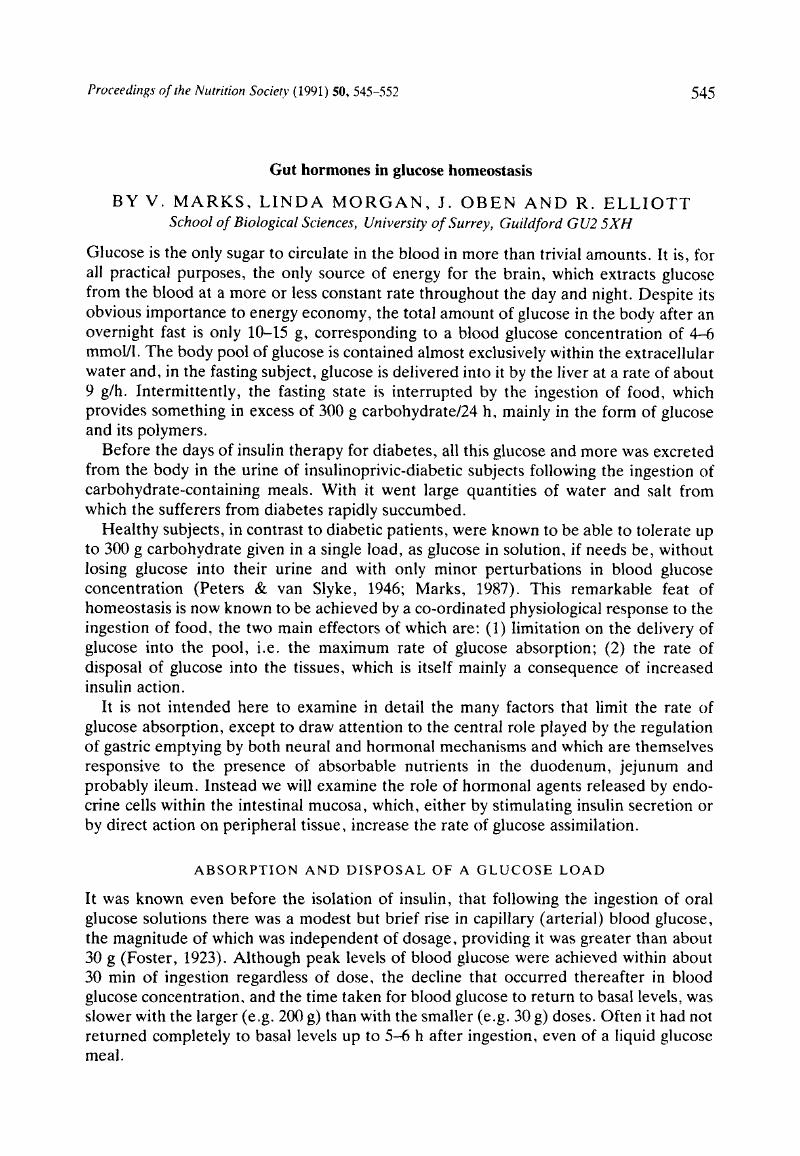Crossref Citations
This article has been cited by the following publications. This list is generated based on data provided by Crossref.
Dühlmeier, R
Deegen, E
Fuhrmann, H
Widdel, A
and
Sallmann, H.-P
2001.
Glucose-dependent insulinotropic polypeptide (GIP) and the enteroinsular axis in equines (Equus caballus).
Comparative Biochemistry and Physiology Part A: Molecular & Integrative Physiology,
Vol. 129,
Issue. 2-3,
p.
563.
Johnston, Kelly L
Clifford, Michael N
and
Morgan, Linda M
2002.
Possible role for apple juice phenolic compounds in the acute modification of glucose tolerance and gastrointestinal hormone secretion in humans.
Journal of the Science of Food and Agriculture,
Vol. 82,
Issue. 15,
p.
1800.
Johnston, Kelly L
Clifford, Michael N
and
Morgan, Linda M
2003.
Coffee acutely modifies gastrointestinal hormone secretion and glucose tolerance in humans: glycemic effects of chlorogenic acid and caffeine.
The American Journal of Clinical Nutrition,
Vol. 78,
Issue. 4,
p.
728.
Harrold, Joanne A.
Dovey, Terry M.
Blundell, John E.
and
Halford, Jason C.G.
2012.
CNS regulation of appetite.
Neuropharmacology,
Vol. 63,
Issue. 1,
p.
3.
de Graaf-Roelfsema, Ellen
2014.
Glucose homeostasis and the enteroinsular axis in the horse: A possible role in equine metabolic syndrome.
The Veterinary Journal,
Vol. 199,
Issue. 1,
p.
11.
Narayanaswami, Vidya
and
Dwoskin, Linda P.
2017.
Obesity: Current and potential pharmacotherapeutics and targets.
Pharmacology & Therapeutics,
Vol. 170,
Issue. ,
p.
116.
Guerrero-Hreins, Eva
Goldstone, Anthony P.
Brown, Robyn M.
and
Sumithran, Priya
2021.
The therapeutic potential of GLP-1 analogues for stress-related eating and role of GLP-1 in stress, emotion and mood: a review.
Progress in Neuro-Psychopharmacology and Biological Psychiatry,
Vol. 110,
Issue. ,
p.
110303.



